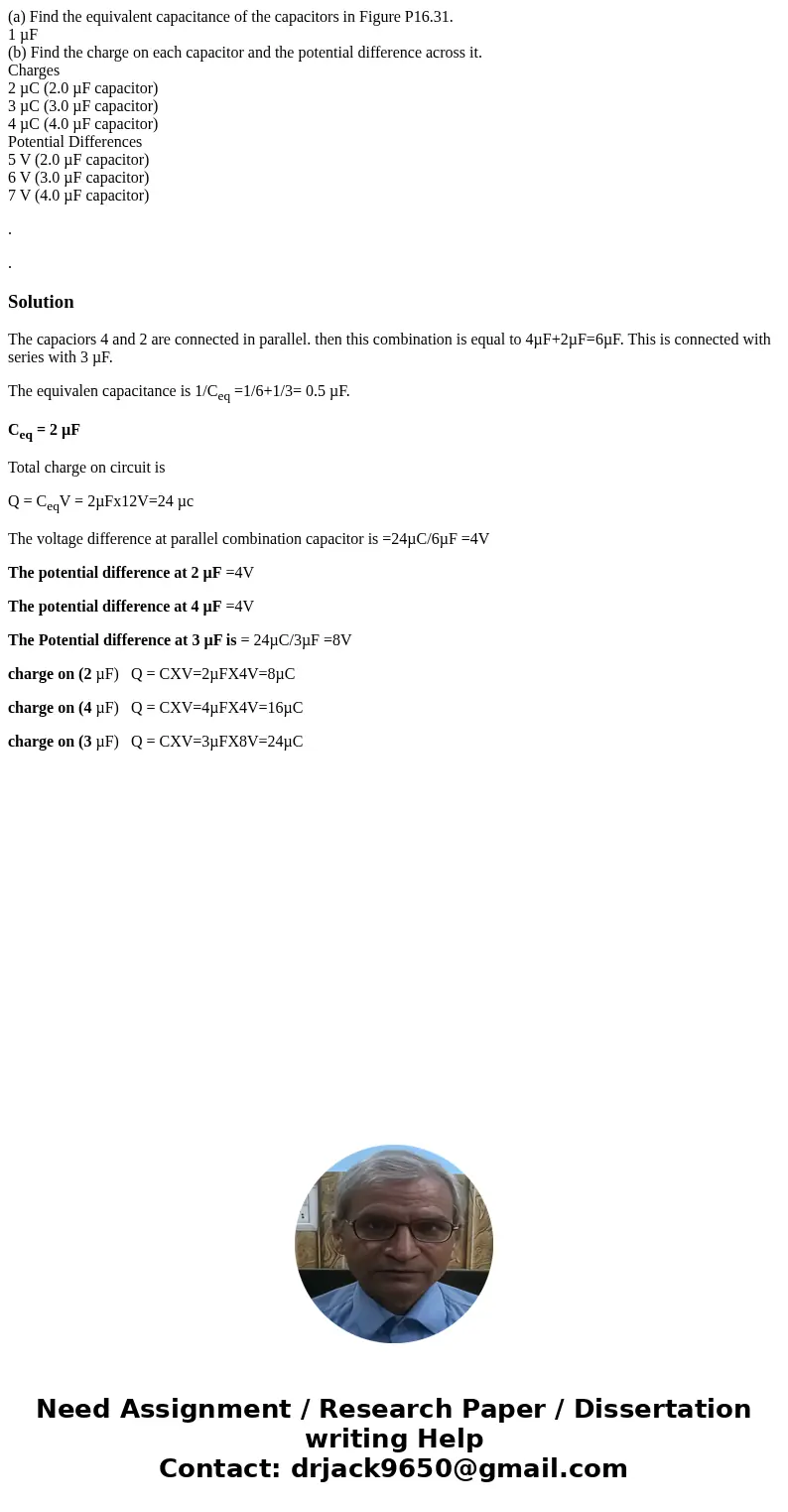a Find the equivalent capacitance of the capacitors in Figur
(a) Find the equivalent capacitance of the capacitors in Figure P16.31.
1 µF
(b) Find the charge on each capacitor and the potential difference across it.
Charges
2 µC (2.0 µF capacitor)
3 µC (3.0 µF capacitor)
4 µC (4.0 µF capacitor)
Potential Differences
5 V (2.0 µF capacitor)
6 V (3.0 µF capacitor)
7 V (4.0 µF capacitor)
.
.
Solution
The capaciors 4 and 2 are connected in parallel. then this combination is equal to 4µF+2µF=6µF. This is connected with series with 3 µF.
The equivalen capacitance is 1/Ceq =1/6+1/3= 0.5 µF.
Ceq = 2 µF
Total charge on circuit is
Q = CeqV = 2µFx12V=24 µc
The voltage difference at parallel combination capacitor is =24µC/6µF =4V
The potential difference at 2 µF =4V
The potential difference at 4 µF =4V
The Potential difference at 3 µF is = 24µC/3µF =8V
charge on (2 µF) Q = CXV=2µFX4V=8µC
charge on (4 µF) Q = CXV=4µFX4V=16µC
charge on (3 µF) Q = CXV=3µFX8V=24µC

 Homework Sourse
Homework Sourse